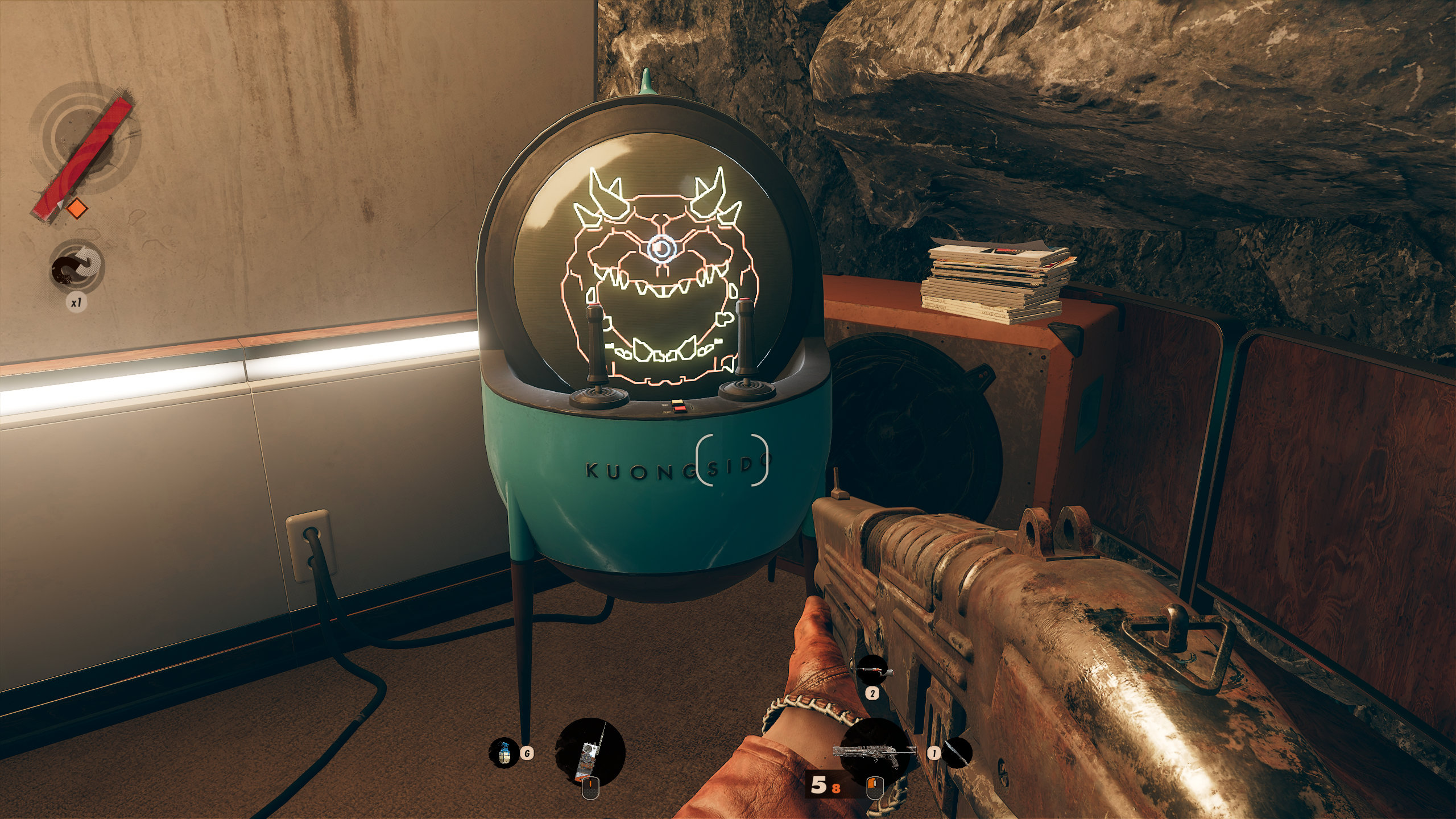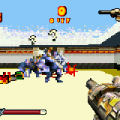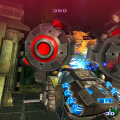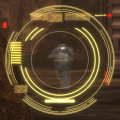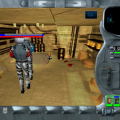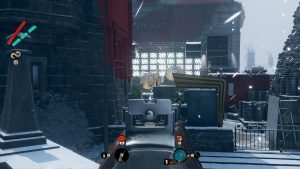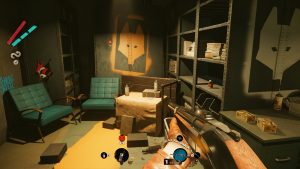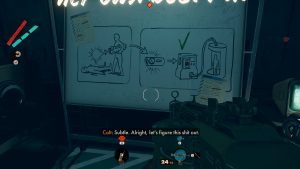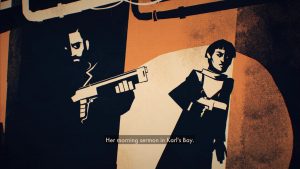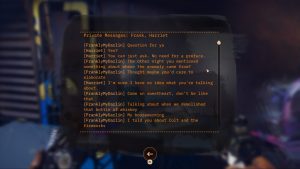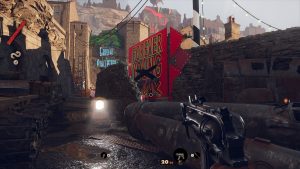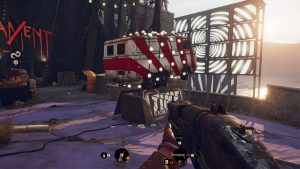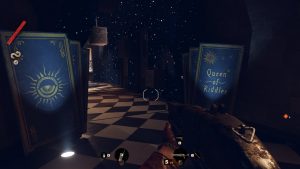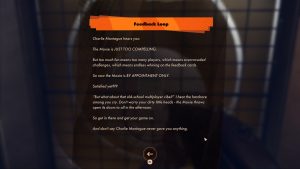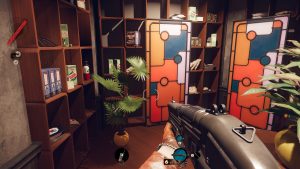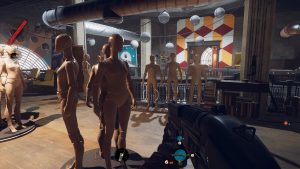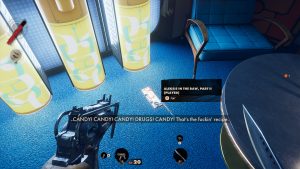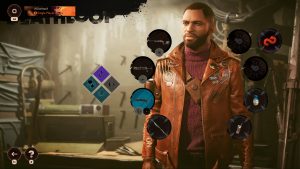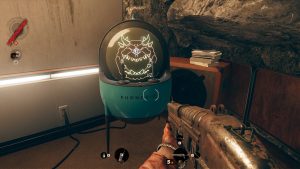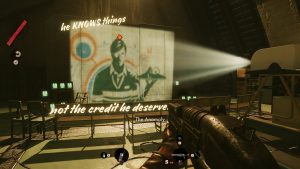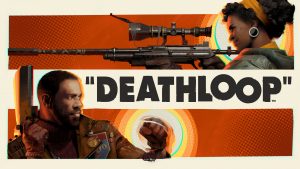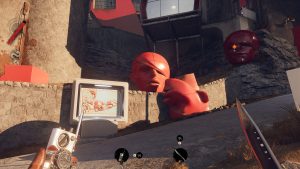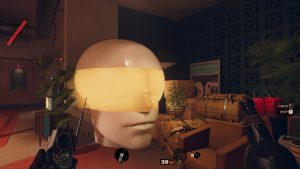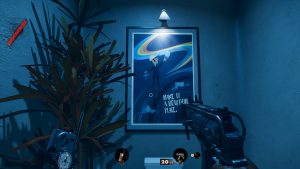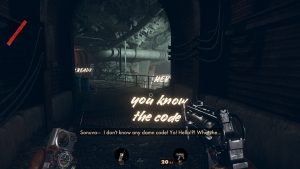
After Prey (2017) underperformed, Arkane mainly focused on an expansion for Dishonored 2 and helping MachineGames with some Wolfenstein projects. As for the next big project, that turned out to be Deathloop, a game subtly set in the Dishonored universe in an alternate history style Cold War era, and it turned out to be very, very different from any other project they’ve done tonally. Not necessarily in the design, mind you.
Where Prey was melancholy and thoughtful with bits of dark humor, and Dishonored leaned heavily into mature fantasy and tragedy, Deathloop is a wacky hijinks murder adventure where everyone hates each other and included animated cutscenes see the cast killing each other like Bugs Bunny sabotaging Wile E. Coyote’s newest Acme gadget. It’s yet another immersive sim, it has some familiar mechanics, but it’s a bit different in its unique hook – a time loop.
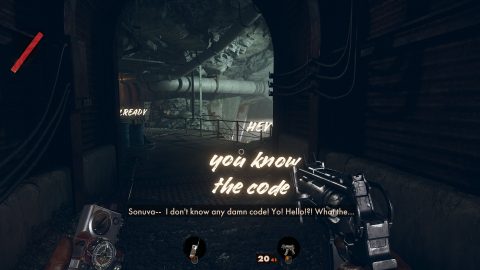
The story follows Colt, a man who has somehow lost his memory, awakening on a beach and unaware of how he got here or where this is. A woman named Juliana insults him over a radio as he gets his bearings, and his first day on the island ends with her killing him and Colt meeting…himself. He wakes on the beach again, remembering what just happened, or rather what happened in another version of this day.
The island of Blackrock is stuck in a day long time loop, and in order to break it, Colt needs to make a perfect run and kill every single one of the eight “visionaries” that sustain the loop and lead the people here. What was once a research project has turned into hedonistic chaos, with everyone but Juliana and Colt forgetting each previous loop. With the former hell bent on keeping up this madness forever, the latter has to end it and bring everyone straight back to reality, because he’s the gravity, baby. Trust me, that’s no worse than what comes out of Colt’s mouth, a man who unironically names his gun “Mr. Kill.”

Deathloop‘s entire concept is kind of brilliant. Time loops are nothing new for games, but in the context of an immersive sim built around assassination, it allows for a lot of old ideas to feel fresh again. The basic formula of Arkane’s other releases is there, down to object interaction, a light stealth system, and some carry over Dishonored magic, but the actual structure of the game encourages even more exploration and experimentation then ever before.
Since you’re stuck in a loop, you’re allowed to poke and prod with little fear of repercussion or resource loss, to see what affects what, and find information and tools to help you as you go on. The game isn’t quite as experimental as you may have wanted, though. Cole gains an ability to bring items over from previous loops called infusion partway through the story, but even that is limited and you’re still encouraged to mess around with your load out. You can even add trinkets to customize your weapons with additional perks, and the same can be done with Colt.
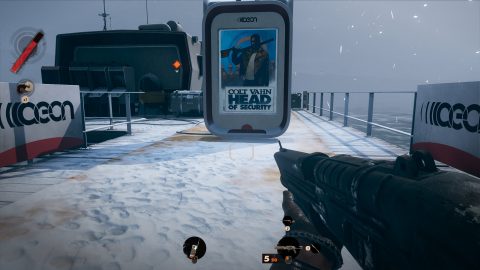
The set up is that you have four periods of the day to explore and work your magic (time passing when you return to the tunnels), visionaries being active at various points at various times. The goal to finish the game is figure out when and where all of them will be during a loop day and figure out a way to kill all of them in a single loop. Easier said than done. To give the game structure, you’re given goals in the form of “leads,” which can find more useful information the game keeps track of, and even possible weapons and powers to add to your load out.
Said powers are called “slabs,” held by the visionaries, and can be added to your arsenal once claimed with an infusion via some “residuum,” found from distorted items in the area and killing slab holders. They’re a varied set of skills, including teleportation, an extra deadly magic attack, a causality manipulator that “links” targets so what affects one affects another, ect. Colt also starts with reprise, which gives you more than one shot at a section with a smart checkpoint revive, refreshing between segments. It helps with the game’s online features from being too frustrating, that feature mainly being Juliana.
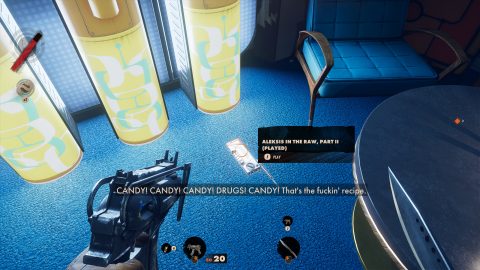
See, Juliana will sometimes invade an area you’re in to hunt you, which locks off your tunnel exits until you hack a nearby satellite dish. Her slab in-universe lets her use the powers of the other characters, so killing her can earn you a random extra power. This ties into the game’s multiplayer aspect: If you’re in online mode and in an area with a visionary, a player can pop in as Juliana to hunt you. It’s a neat little concept, keeping you on your toes as you go about your business. It’s a fun way to keep things from becoming too samey. Offline mode will just use bots instead, if you need a break from higher skill players.
Exploring the various areas of Blackrock goes as you’d expect for this genre. You can sneak around guards, explore nooks and crannies as you find them, gather information hidden around, ect. You can also run around like a madman with a machete, which is more effective then you’d first think at times. Colt gets a double jump early, giving a lot of fun options with moving around the area, though alerted enemies can move fast and reach high places faster than you may have expected as well. You’re a hunter, but a big enough gun will still bring you down.
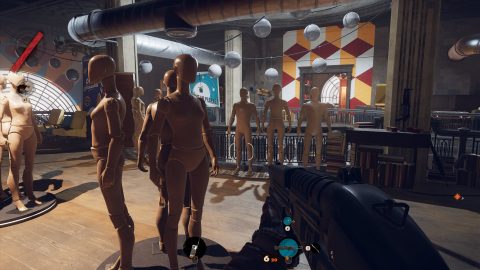
It’s all about choices. You get plenty of tools to customize your approach, and you’ll be thrown a mess of obstacles to deal with that test your ability to adapt and think outside the box. Dealing with the rank and file becomes pretty breezy, but each of the visionaries brings different tricks and complications that will throw off your rhythm constantly.
“Rambling” Frank Spicer, for instance, does not have a slab. However, he’s holed up in a fortress that entering from the front requires neutralizing your slabs, while Frank is armed to the teeth with heavy security inside his place. Every visionary has a unique set of circumstances that make them tricky to kill, further complicated by trying to figure out how to kill all of them within one cycle of four phases.
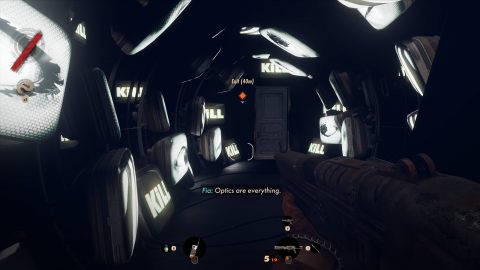
The structure also allows for some clever storytelling. There are a lot of seemingly random one off events in various areas that actually play in each loop and give you details on just what is actually happening around Blackrock. Curiosity is sated as you pay close attention, and doing so leads to rewards, and even some necessary progression. The key to this working is that it’s usually unclear initially how the pieces fit together and for what puzzle. There’s a lot more going on here besides the time loop, including political espionage and relationship drama.
Blackrock and its dysfunctional visitors make for a fantastic cast, one you rarely interact with beyond killing, but a mess of audio and text logs make up for it. Arkane has always had a good staff for writing these detail fillers, and they really brought their A-game this time alongside the strong voice cast. They make the visionaries and their ridiculous minions entertaining, despicable, and even sympathetic at times. It helps everyone has a strong theme to their character that makes their impact on the island clear, giving you hints just from observation of where you can find them.

For example, Aleksis Dorsey is a spoiled brat (a pharmabro, no less) who views the world as one of wolves and sheep. He is cartoonishly evil, using the time loop to have a guilt free cannibalistic party at night, himself and his guests dressed in wolf masks. He hides in plain sight, and finding him among his pack becomes the challenge. Once you do, you may wish you hadn’t, due to him being one of the strongest of the slab holders in terms of killing ability.
Others are more complicated. Charlie Montague is a socially awkward, easily angered game designer messing around with IRL games. He prefers to be in the background and have you interact with him via his games, like rigged loot boxes that explode if you don’t reach them in time. Emotionally unstable, and in the background, controlling things from a safe area. Not only do you have to find him, you have to figure out how to win his rigged games, or to find a way to subvert the system entirely.
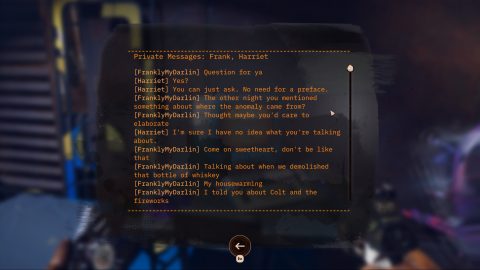
It goes on and on like this, everyone clearly defined, their skills, experience, and personalities driving their decisions, every detail giving you an idea of where to look or how to approach. This extends to the entire setting as well. Blackrock feels lived in, from the wild psychedelic colors and architecture contrasting with the natural beauty surrounding it. The minions aren’t trained soldiers, so they dress in whatever they feel like. The score is filled with acoustic pieces and exciting of-the-era spy film riffs. You also get text displayed via time shenanigans from other Colts, a subtle way to guide the player and give a better idea of what Colt is like and how you should play him. The one message saying “KILL EVERY LAST MOTHERFUCKER” should tell you how much has changed from past Arkane immersive sims.
The core of all this is the game’s strong base mechanics. There’s a solid selection of weaponry, all fun to fire and take down enemies. Said enemies use the same tools you do, so you even get to know first hand how powerful they can be. There’s even some wild stuff to find via leads, including a monster of a sniper rifle found in one of the single goofiest moments on offer. You get a double jump at start, a simple but effective stealth system, and even solid enemy AI that gets aggressive when danger is sensed. It all adds up to a fun time in the moment to moment, being caught leading to ridiculous spectacle over frustrating dead ends.
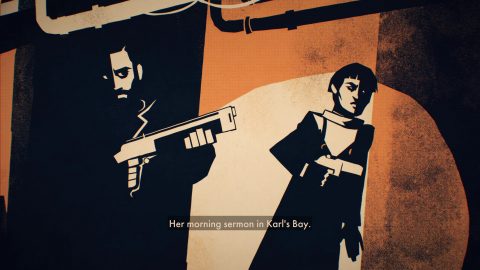
It isn’t quite perfect, mind you. The enemy AI sometimes breaks in odd ways, the weapon selection is fairly simple for the girthy length you may be dealing with, and repetition does eventually set in. The Juliana invasion system is neat at first, but it does start to become aggravating when you’re trying to make progress on leads after a bit of hitting your head against a wall to find a new angle to tackle. The game never quite nails a good sense of pacing, which stealthy players will definitely notice more than anyone else.
There’s also a good deal of critique worth leveling at the story. Beyond having yet another lacking wrap up (an immersive sim tradition at this point) that leaves things open for a new game, there are some bizarre choices. The biggest of them is definitely who Juliana turns out to be, not to mention how Colt manages to be likable but very little else beyond hints of something interesting in side documents and logs. The entire adventure feels pointless by the end, and I’m not sure that was entirely intentional. It’s sort of like a filler arc at the end, with the more interesting details worth exploring left dangling for probably many more years. The world building is aces, but the actual substance doesn’t really work as well as it could have.
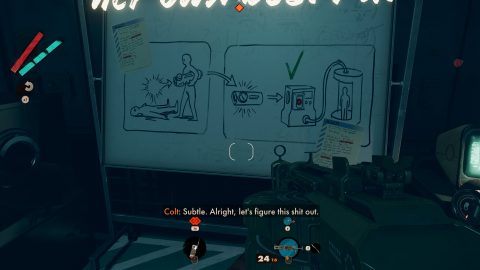
Still, seeing a game like Deathloop at this scale of production is quite a sight to see. There’s a lot to love, and some ambitious indie devs should take notes and expand on some of the ideas thrown out here. As an immersive sim, the game isn’t one of the greats, but it’s a fresh take, a shot in the arm that could lead to some exciting things from Arkane and others inspired by it. Plus, it has fun guns, wacky villains to kill, and a lot of game to explore. It’s a solid package in its own right, and a pretty one at that.
